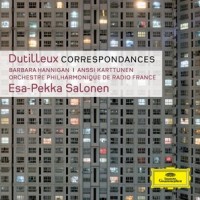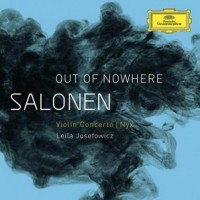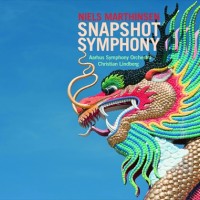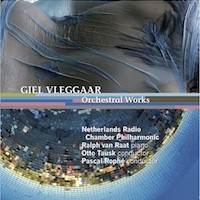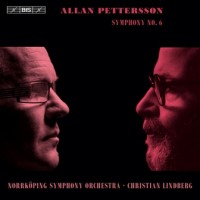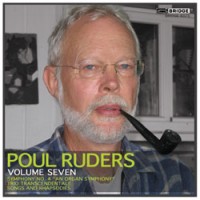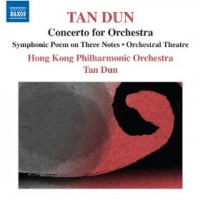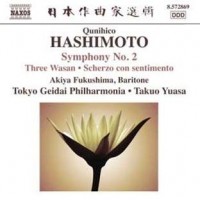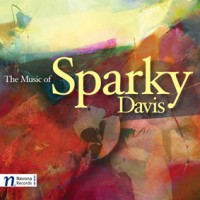Mostly Symphonies 21.
|
Grant Chu Covell [March 2013.] “Correspondances.” Henri DUTILLEUX: Correspondances (2003)1; Tout un monde lointain (1970)2; The shadows of time (1997). Barbara Hannigan1 (sop), Anssi Karttunen2 (vlc), Orchestre Philharmonique de Radio France, Esa-Pekka Salonen (cond.). DG 0289 479 1180 7 (1 CD) (http://www.deutschegrammophon.com/). “Out of Nowhere.” Esa-Pekka SALONEN: Violin Concerto (2009); Nyx (2011). Leila Josefowicz (vln), Finnish Radio Symphony Orchestra, Esa-Pekka Salonen (cond.). DG 0289 479 0628 5 (1 CD) (http://www.deutschegrammophon.com/). Salonen’s double-duty warrants this pairing. As much as I want to investigate Salonen’s music, I will return to Dutilleux more frequently. Last year I heard the same soloist and composer/conductor with the Boston Symphony Orchestra. Salonen addressed the audience about how leaving L.A. and turning 50 brought about a life crisis and a violin concerto. My immediate impression, that the Concerto was an angry work, wasn’t mirrored in others’ comments, and I waited for the recording for a second try. This release may have less vitriol, but there’s little joy, just relentless busying. Maybe the interrupting rock-influenced percussion in the scherzo was meant to suggest a wider vista. Certainly Josefowicz keeps busy and makes it look easy. Salonen’s 20-minute Nyx churns quickly, but the less frequently recorded Dutilleux sticks in the mind. Given the creamy textures, perhaps Salonen works better with the Radio France orchestra. Certainly, Dutilleux’s masterful colors emerge bolder than Salonen’s own spiky vocabulary. Employing Anne Frank’s words, The shadows of time sounds much older than it is, perhaps because Dutilleux’s language is so distinctive. Karttunen takes a secure and sober path through the cello concerto Tout un monde lointain, an undeniable classic. Rostropovich may have been more expressive, but Salonen’s French orchestra is a delight to hear. Dutilleux labors slowly and precisely, and so Correspondances, a setting of artists’ letters for soprano and orchestra, is practically a new work. I wish Salonen would take on the two symphonies. It would be wonderful to hear Le double on SACD. Niels MARTHINSEN: Symphony No. 2, “Snapshot Symphony” (2009); Concerto for Three Trombones and Orchestra, “In the Shadow of the Bat” (2009)*; Snow White’s Mirror – Opera Trailer (2010); The King of Utopiaville Demo (2009). Håkan Björkman*, Stefan Schulz*, Jörgen van Rijen* (trbs), Aarhus Symphony Orchestra, Christian Lindberg (cond.). Dacapo 8.226545 (1 CD) (http://www.dacapo-records.dk/). Marthinsen’s Second impresses with its bravura collection of exotic postcards. The first movement conjures Mexico as well as any Revueltas or Moncayo. The Arabian and Chinese aspects of the last two movements are less specific, but dredge across pop gestures as well as genre stereotypes. Marthinsen enjoys manipulating caricatures and cartoons. The triple trombone concerto concerns Batman, and the two opera paraphrases are highlight reels. Everything is bright and pops. Giel VLEGGAAR: Piano Concerto (2008)1; Ayre of Solace (2009)2; Dead as Disco (2006)3. Ralph van Raat1 (pno), Netherlands Radio Chamber Philharmonic1,2,3, Otto Tausk1,3, Pascal Rophé2 (conds.). Etcetera KTC 1405 (1 CD) (http://www.etcetera-records.com/). Imagine a gleeful Bartókian minimalist. The notes allege that even fellow Netherlanders find Vleggaar too extroverted. He calls himself “…some kind of over the top Bernstein.” These three works strike different poses: a confident concerto, a melancholic nod to Dowland, and what Ravel did for waltzes, Vleggaar does for disco. Astonishingly, identical melodic fingerprints appear throughout: a descending A-G-F-E opens both Ayre and Dead. Hum it to yourself variously and you’ll hear a slow lute or a thumping dance beat. Van Raat is crystal clear in the Concerto. Allan PETTERSSON: Symphony No. 6 (1963-66). Norrköping Symphony Orchestra, Christian Lindberg (cond.). BIS BIS-SACD-1980 (1 SACD) (http://www.bis.se/). Bis lumbers towards a complete Pettersson symphony series with Lindberg at the helm. Lindberg’s prior installment provided a performing version of the incomplete First with No. 2 (BIS 1860). Hardly charismatic, this single-movement Sixth, just ten seconds shy of a grinding hour, traces a predominantly stifling arc, excepting for some gleaming moments. Pettersson symphonies are hardly non-trivial and it makes no sense to dismiss older recordings, but the laboring Norrköping and Lindberg offer an incisive interpretation, decidedly more focused than Trojahn’s 1993 cpo 999 124-2 (60:38). “Poul Ruders. Vol. 7.” Poul RUDERS: Symphony No. 4, “An Organ Symphony” (2008)1; Trio Transcendentale (2010)2; Songs and Rhapsodies (2011)3. Flemming Dreisig1, Nicholas Wearne2 (org), Frode Anderson3 (accordion), Athelas Sinfonietta Copenhagen3: Karen Skriver Zarganis (fl), Andreas Fosdal (ob), Anna Klett (clar), Thomas Ekman (hn), Signe Haugland (bsn), Odense Symphony Orchestra1, Robert Minczuk1 (cond.). Bridge 9375 (1 CD) (http://www.bridgerecords.com/). The organ provides a warming buzz to Ruders’ Fourth. Passing jazz bursts recall Copland’s similarly scored First, with Ruders exploring more modernistic roads. The organ produces subtle clustering effects throughout, especially in the Bartókian Etude. The solo organ trifle, a test piece, Trio Transcendentale, skitters across manuals and pedals as it grows brasher and more dissonant. The 12-part Songs and Rhapsodies cleverly blends accordion with five winds. Sometimes the instruments dart through each others’ statements; elsewhere they sigh and wheeze en masse. Tan DUN: Symphonic Poem on Three Notes (2012); Orchestral Theatre (1990); Concerto for Orchestra (2012). Hong Kong Philharmonic Orchestra, Tan Dun (cond.). Naxos 8.570608 (1 CD) (http://www.naxos.com/). I want to give Tan Dun a fair shake. The Poem’s three notes, la-si-do (A-B-C), are meant to commemorate Plácido Domingo who took the lead role when The First Emperor appeared at the Metropolitan opera. With spoken effects and exotic percussion including stones and brake drums (presumably not together), the work must be taken in a lighthearted vein. A sleepy flute wanders through Orchestral Theatre in which Tan Dun tried to blend atonality and folk music. While this Concerto won’t displace Bartók’s, it’s evident that Tan Dun uses the orchestra to simulate voices in a crowd. The Concerto’s subject, Marco Polo, wanderer and explorer, passes musically through bazaar and desert on his way to the Forbidden City. Qunihico HASHIMOTO: Symphony No. 2 (1947); Three Wasan (1948)*; Scherzo con sentimento (1928). Akiya Fukushima* (bar), Tokyo Geidai Philharmonia, Takuo Yuasa (cond.). Naxos 8.572869 (1 CD) (http://www.naxos.com/). Naxos finally turns the corner with Hashimoto’s Second. The 1940 First bridged genres and continents, however the Romantic Second offers two lush movements which gaze upon Bohemian hills and valleys, odd vistas for a work meant to celebrate the postwar Japanese Constitution. Perhaps Hashimoto thought the new Japan would look westward. Frequent modal changes (one pitch changing at cadences and section ends) could signify the East. The Finale comprises an upbeat theme and variations, a momentary scherzo and a grander conclusion. The Three Wasan are Buddhist verses set in a Technicolor Romantic style, whereas the older Scherzo actually suggests Oriental melodies. It’s not that Hashimoto ought to sound Asian, but it does seem odd that he identifies with an earlier European age. Sparky DAVIS: …and One Last Waltz (1998)1; Symphony in Bb (2007-11?)2; Fantasy Sonata (2011)3. Moravian Philharmonic Orchestra1,2, Vít Micka1,2, Petr Vronský2 (conds.). Karolina Rojahn3 (pno). Navona Records NV5897 (1 enhanced-CD) (http://www.navonarecords.com/). Navona introduces the “modern, not modernistic” music of Sparky Davis who would be happy to wind back the clock to a world before Mahler and Ravel. …and One Last Waltz and the Symphony suggest a heroine pining for her departed or the sun setting over the foreclosed farm. It’s hard to tell whether Davis would prefer to be a Modernist in the 20th century or a Romantic in the 21st. Phrases turn unexpectedly, suggesting precisely plotted harmonic thwarting or self-taught pastiche. Scant notes do not indicate Davis’ background (and what does it mean when Google turns up zip?). I couldn’t say whether this release is a culmination or a tentative first toe in the water. The less ambiguous Romantic Fantasy surfs Lisztian / Rachmaninovian waves, although there are times when Davis strives to resolve à la Wagner but doesn’t dare. Now and again, I wish he had just gone for it and recycled the Tristan chord. A piano concerto would perhaps show Davis in a better light.
[More Grant Chu Covell, Mostly Symphonies]
[Previous Article:
Luc and Brunhild (EA Bucket 17.)]
[Next Article:
Scardanelli’s April Motley]
|
